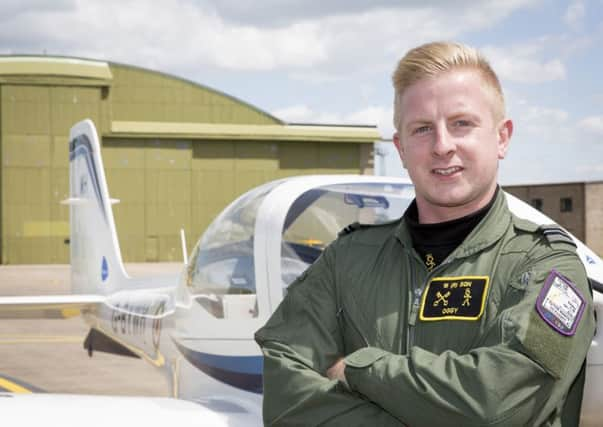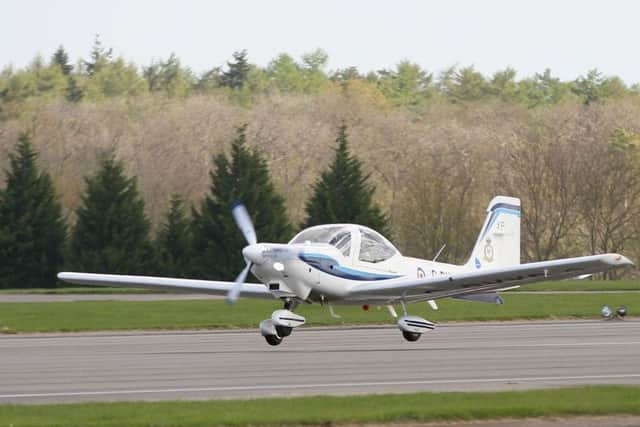Landmark for RAF Wittering's training squadron


Flying Officer Alex Ogden was an undergraduate at the University of East Anglia (UEA) and member of Cambridge University Air Squadron when on Monday April 14, 2014, with Squadron Leader Christopher Kane at his side, he was co-pilot of the first aircraft to touch down at the reactivated airfield.
Alex has now graduated from UEA with a first class honours degree in mathematics and joined the RAF as an officer cadet. Having completed his officer training at RAF College Cranwell he returned to RAF Wittering as a member of 16 (Reserve) Squadron.
Advertisement
Hide AdAdvertisement
Hide AdA graduate with a first class honours degree in mathematics might be thought to have the world at his feet, so why choose the Royal Air Force?


Flying Officer Ogden said: “I’ve always loved military aircraft; it’s why I became an air cadet and that’s how I learned about the air force.”
March, the Fenland town where Alex grew up, is not far from the Royal Air Force Stations at Marham and Wittering and the United States Air Force bases at Mildenhall and Lakenheath. Military aircraft are a common sight in the Fenland skies with Typhoons, Tornados and USAF F-15s frequently overhead.
16 (R) Squadron is one of two Royal Air Force units which train novice pilots. The other is 57 (R) Squadron at RAF College Cranwell. Although there’s a healthy rivalry between the two squadrons, they both teach basic aircraft handling, navigation, aircraft systems and the rules of the air.
Advertisement
Hide AdAdvertisement
Hide AdQuite what Alex’s flying career will bring is not known, but for now the former Neale-Wade pupil’s sights are set on the fast jets he saw in the skies over March. After elementary flying training the pilots are selected for the aircraft their instructors feel suits them best; fast jets, helicopters or multi–engine aircraft.


Flight Lieutenant Dan Jones the Officer Commanding 16 (R) Squadron. He said: “Alex and his fellow students have done really well. It takes ability, talent and perseverance to complete this course – but this is a world class training system, so if you have the raw materials we can develop you.”
Group Captain Rich Pratley is the Station Commander at RAF Wittering. He said: “It is perfect that the Co-Pilot of the first aircraft to land at our reactivated airfield in 2014 should graduate from this Station as a novice pilot. That Flying Officer Ogden is local to us makes his graduation all the more remarkable.”
The Station Commander continued: “In years to come, he and his fellow course-mates may find that their deployed air operations are supported by the expeditionary engineering and logistics squadrons from the Station at which they learned to fly.”